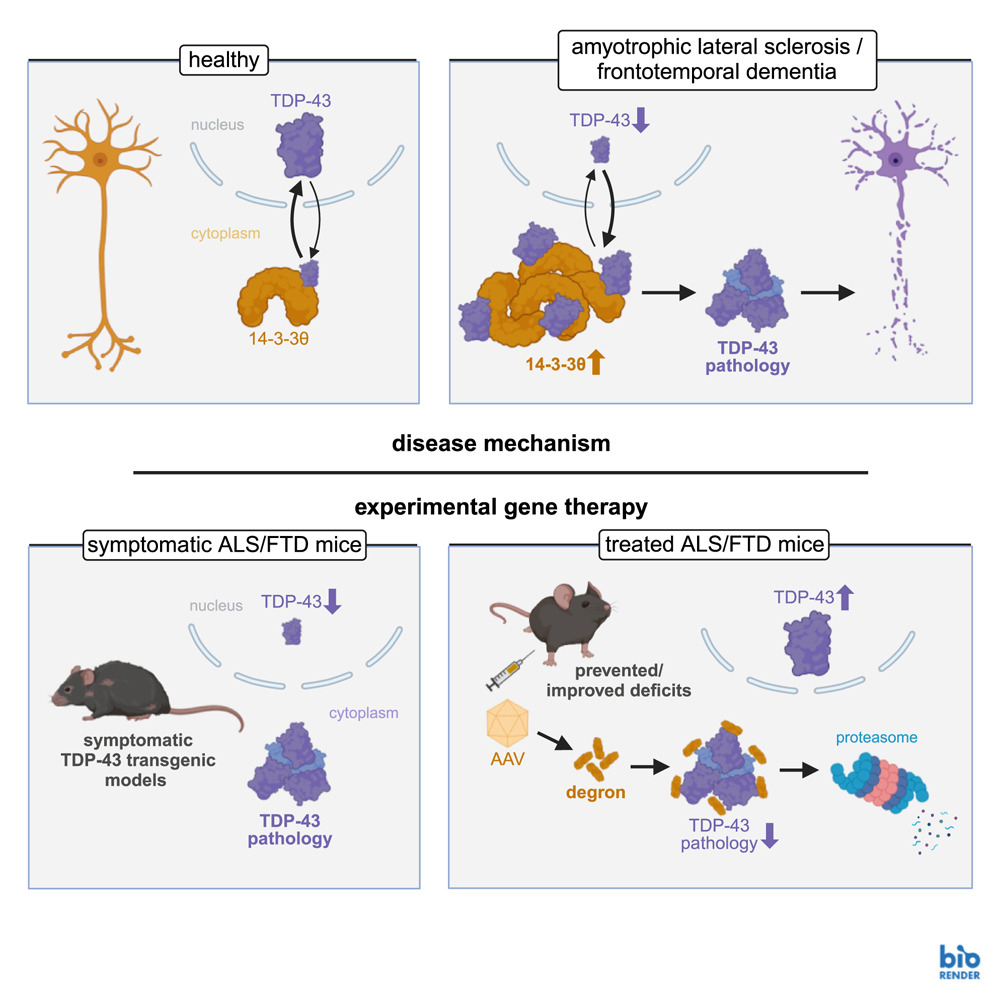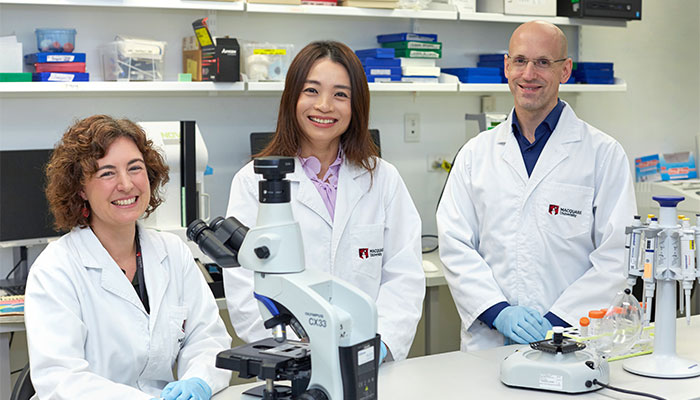Published online (16th Feb 2024) in the prestigious journal Neuron is the outcome of over 15 years of study by researchers at Macquarie University’s Dementia Research Centre.

How CTx1000 Genetic Medicine Works:
1. Targeting TDP-43
TDP-43 is a protein that is normally found in the nucleus of neurons in the brain and spinal cord, and in diseases such as ALS, FTD, and other dementias TDP-43 is mis-located and forms toxic aggregates in the cytoplasm. This toxic form of TDP-43 associates with 14-3-3θ and accumulates and eventually kills the neuron. Over time, this leads to increasing functional deficits in patients as their neurodegenerative condition progresses.
2. Cleaning up TDP-43
CTx1000 (“degron”) has been designed using knowledge of 14-3-3θ to only interact with the toxic form of TDP-43. It selectively binds TDP-43 and tags it for degradation by the cells own “cleaning machinery” known as the UPS System. Once the toxic TDP-43 is removed from neurons, the normal functioning form of TDP-43 is restored and neuron health is preserved.
3. Outcomes (in Mice)
Many studies examine new drugs and their impact in model systems. Frequently the new drugs are administered and tested in non-symptomatic mice, but this does not represent the typical patient profile (in ALS, FTD or Dementia) as these patients often have well advanced disease. This study tested CTx1000 in symptomatic mice, and was still able to partially reverse the disease. 38.5% increase in survival and a 63.9% delay in the onset of paralysis compared to the non-treated control group.
4. Next Steps
Celosia Therapeutics is planning its pre-clinical studies over the next 2-3 years before the commencement of our first human trials.
This unique genetic medicine is exclusively licensed to Celosia Therapeutics.
Congratulations to all the research team involved. Three of the key researchers (L-R) Dr Annika van Hummel, Professor Yazi Ke and Professor Lars Ittner from the Dementia Research Centre (Macquarie University) are pictured below.
